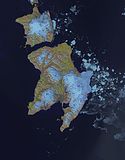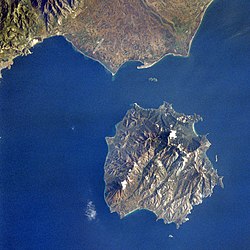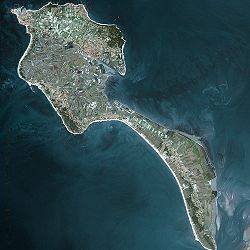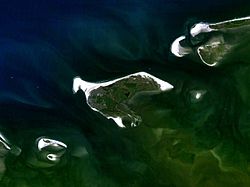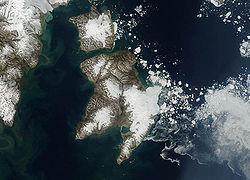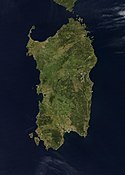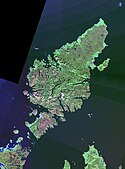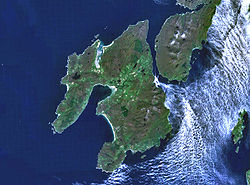Rhodes, Greece - NASA Earth Observatory
To download the full resolution and other files go to: earthobservatory.nasa.gov/IOTD/view.php?id=77079&src=...
Rhodes (also Rodos) is the biggest island in the Greek Dodecanese chain, which lies in the southeastern Aegean Sea. Rhodes stretches roughly 77 kilometers (48 miles) from northeast to southwest. Its highest point, Mount Attavyros (also Attaviros or Ataviros) reaches 1,200 meters (3,900 feet) above sea level. A variety of vegetation thrives on the rugged island, migratory birds use it as a resting place, and humans have lived here since the Stone Age.
The Thematic Mapper on the Landsat 5 satellite captured this image of Rhodes on August 26, 2011. Green vegetation is fairly abundant over the island, except for Mount Attavyros and some spots along the coast.
Satellite images such as this have provided more than pretty pictures. They have contributed to geologists’ understanding of the island’s history and structure.
Geological research of Rhodes is nothing new; the first geological studies of the island occurred in the 1850s. Geologizing continued the next century, and more systematic research from 1960 to 1965 resulted in a map issued by the Institute of Geology at the University of Milan, Italy. Unfortunately, these studies occurred before the widespread acceptance of a theory that changed our understanding of the Earth: plate tectonics.
Geologists now understand that our planet’s surface is composed of plates that move relative to each other. Rhodes sits in an active area, where the African Plate slides below the Aegean Plate, producing fairly strong earthquakes. Fossils found on the island date back to the late Paleozoic Era before the dinosaurs evolved. The fossils occur in limestone, indicating that what became the island of Rhodes was at that time underwater. Around 15 million years ago, tectonic activity uplifted the whole region, but between 4 million and 3 million years ago, the land sank leaving just the mountaintops above water.
When geologists reexamined Rhodes to create a new map, they not only incorporated advances in geologic theory. They also incorporated advances in remote sensing technology. A paper published in 2007 described the compilation of a new geological map of Rhodes, based in part on satellite observations by Landsat, and by Advanced Spaceborne Thermal Emission and Reflection Radiometer (ASTER) on NASA’s Terra satellite.
NASA Earth Observatory image created by Jesse Allen and Robert Simmon, using Landsat data provided by the United States Geological Survey. Caption by Michon Scott.
The Earth Observatory's mission is to share with the public the images, stories, and discoveries about climate and the environment that emerge from NASA research, including its satellite missions, in-the-field research, and climate models.Relevante Bilder
Relevante Artikel
Liste europäischer Inseln nach FlächeDies ist eine Liste europäischer Inseln . Binneninseln sind in der Regel nicht aufgeführt. .. weiterlesen


